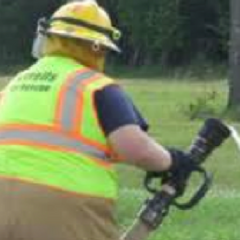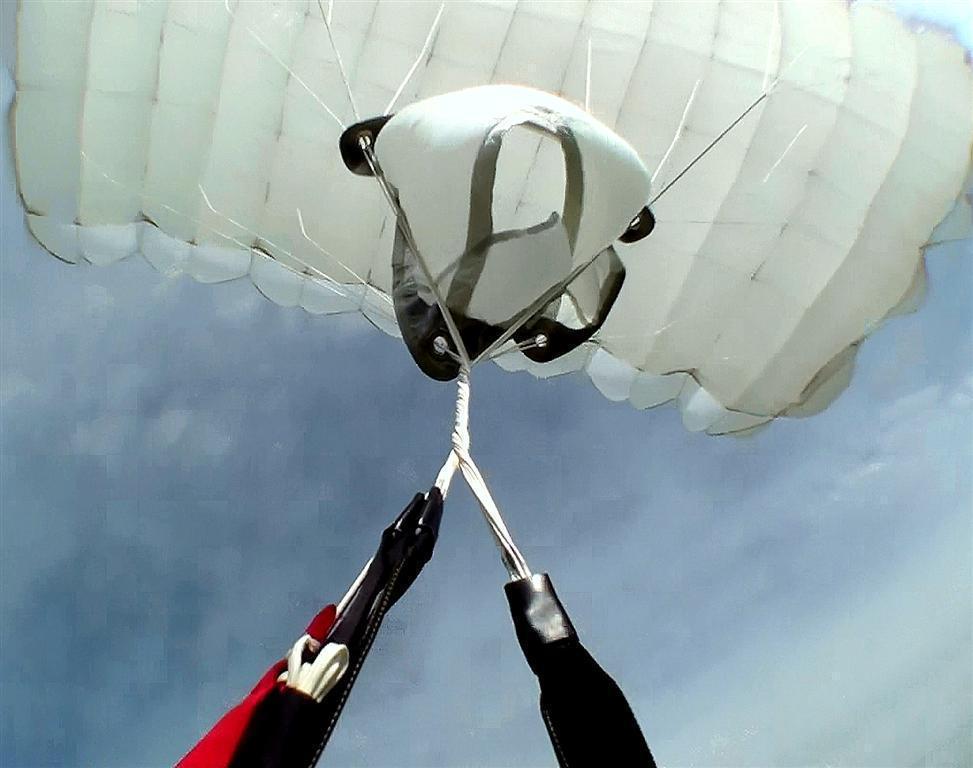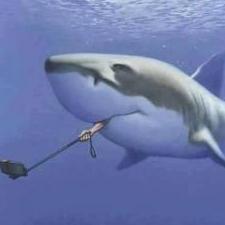Leaderboard
-
in all areas
- All areas
- Adverts
- Advert Questions
- Advert Reviews
- Videos
- Video Comments
- Blog Entries
- Blog Comments
- Images
- Image Comments
- Image Reviews
- Albums
- Album Comments
- Album Reviews
- Files
- File Comments
- File Reviews
- Dropzones
- Dropzone Comments
- Dropzone Reviews
- Gear
- Gear Comments
- Gear Reviews
- Articles
- Article Comments
- Article Reviews
- Fatalities
- Fatality Comments
- Fatality Reviews
- Stolen items
- Stolen item Comments
- Stolen item Reviews
- Records
- Record Comments
- Record Reviews
- Help Files
- Help File Comments
- Help File Reviews
- Events
- Event Comments
- Event Reviews
- Posts
- Status Updates
- Status Replies
-
Custom Date
-
All time
January 20 2016 - August 17 2025
-
Year
August 17 2024 - August 17 2025
-
Month
July 17 2025 - August 17 2025
-
Week
August 10 2025 - August 17 2025
-
Today
August 17 2025
-
Custom Date
12/23/2021 - 12/23/2021
-
All time
Popular Content
Showing content with the highest reputation on 12/23/2021 in all areas
-
3 points
-
2 pointsIt started out with, "As Christmas approaches its time to celebrate the good work that some within this religion do." I choose to take it at face value. Phil & I have had our spirited differences, but I read nothing in his post that sounded like a setup. Sometimes a rose is just a rose.
-
1 pointAs Christmas approaches its time to celebrate the good work that some within this religion do. Those who choose to put US right wing white nationalism aside. Instead acting to help others in the real name of their religion. Migrants seeking asylum at U.S. border get help from Latter-day Saint Charities, others "A Haitian family waded across the Rio Grande from Mexico into Texas on Thursday and surrendered to police who took them to agents from U.S. Customs and Border Protection, which held the asylum-seekers for one night and then released them. Instead of making their own way on the streets, the family accepted a bus ride to a new Family Transfer Center sponsored by The Church of Jesus Christ of Latter-day Saints, the YMCA and other charitable organizations in Houston, Texas." It takes volunteers and it takes money to help others like this. "Latter-day Saint Charities is providing funding, volunteers and senior missionary couples at the center, which is located in a warehouse operated by The National Association of Christian Churches near Bush Intercontinental Airport. Other partners include Catholic Charities, YMCA International Services, Texas Adventist Community Services, Houston Responds and The Houston Food Bank." From sermons about climate justice to carbon-neutral church halls and eco-friendly initiatives like recycling candles, a growing number of churches are going green. "The Lutheran church in Denmark has traditionally avoided "political" issues, he explains, and a decade ago many church leaders dismissed climate action as being part of a "left-wing agenda." Not any more. Climate change is no longer politically divisive — at least not in Denmark. In December 2019, the country passed a law committing it to reduce carbon emissions 70% by 2030, with support from parties across the political spectrum. Faith communities are increasingly acknowledging the climate crisis. In June 2019, for example, Pope Francis declared a "global climate emergency." For Hansen, it follows that "interest in green churches is booming."..."Denmark now has 232 "green churches," 32 of which signed up in 2019 alone — an increase of 16% on the previous year. " The potential of religious groups to work for a public good and need. Paints Christianity in a positive light and perhaps will overcome the stain that other segments allied with US political interests have spread.
-
1 pointI agree that the pill has to be fake. You see, the smartest guy on dropzone.com, Winsor, told us all how he is the biggest pharmaceutical expert. Then he regaled us with the incredible stories about how the establishment is only working on vaccines, that are really completely useless. So how did anybody have time to work on a COVID pill? Specially anybody in Big Pharma? The pill is probably bleach with a micro UV transmitter.
-
1 point
-
1 pointWell said and extremely similar to my experiences as a child and my disillusion with the Catholic Church.
-
1 pointIndeed. I'm not real sure why Coreece attacked your credibility. I can only assume that he has lumped you into a group that is "liberal" without really reading and considering your posting history. He is often very defensive about the subject of religion and seems to feel it is somehow endangered unfairly whenever any aspect of it is challenged. And now even when it gets any positive mention as well.
-
1 pointI hate double standards. Burn a body at a crematorium, you’re “being a respectful friend.” Do it at home and you’re “destroying evidence.”
-
1 pointI find the concept of blocking people somewhat repugnant and disrespectful. I've come to the conclusion however that you're right. On the internet anyone from a 12 year old delinquent with a computer. To those with all of the best qualities of human behavior. Each can have the same say. Repetitive statements via posting of information so fundamentally, fatally flawed. As to lead you to believe that they are an uneducated 12 year old. Who takes comic relief from wasting your energy and time. Warrants blocking. As such I've followed your actions.
-
1 pointThis is what President Bush meant when he made his, “Thousand Points of Light” speech. A term derived from Arthur C. Clarke’s, “Rescue Party.” Bush went on to start a foundation dedicated to volunteerism. I’ve mentioned on here before that I was raised Catholic and my family (uncles, aunts, cousins, etc.) would get together for the Danny Thomas Telethon collect money from everyone (kids included) and donate it. It was the beginning teaching us to help someone else. Danny Thomas was of Lebanese descent but raised Catholic and vowed at a young age to create a foundation honoring St. Jude – the Patron Saint of hopeless causes and spent years raising money for it before it even got started (about a decade, I think). Danny’s motto was, “No child should die in the dawn of life.” And, to this day, no family pays for treatment. Each church has some form of “Church Charity.” Each year in Oklahoma when tornadoes ravage through our state, the local churches come together and feed the responders. They work with the local restaurants to produce the food, they rally the money for the restaurants, and they serve the meals so the restaurants can focus on cooking. Same with the grass fires in the Spring (our state is predominately Volunteer Fire Departments). I appreciate your starting this thread because it’s easy to throw rocks at religion and we need to remember they do more good than bad – these days. I lost faith in the Catholic Church as an organization in my twenties, but I didn’t lose faith in the kindness and generosity of those who attend church.
-
1 pointThat pic. of 8-point stitch on that Lateral to Main Lift junction you using for an example, is not going to break on any deep No slider deployments, it stronger than the forces your body can ever take . No matter what way you do it . Your Lateral webbing coming out to connect to Main Lift to leg-strap area . If doing a BASE container just try to keep that open bottom area of Tray and the Lateral webbing coming out to minimum . That inside corner area that I pointing to . Is covered by a Lateral Cover, Also the 'splayed' Lat. webbing in the one Pic. in previous Post , It also helps get rid of the Potential Bridal Snag of open area . The Lat. cover that is in PIc. is really simple, and just cut the bottom angle of it, to meet down there to the Container Tray corner area . - -
-
1 pointI'll expand on that with some caviots. Perfectly good model but like most models it breaks down when you try to extend it into the range where the systems behavior becomes nonlinear. That kevlar thread is actually stronger then the nylon tec 500. Sew loops at both ends of a peace of kevlar webbing one with the stronger kevlar and the other with nylon. Pull. The kevlar will break first every time. The nylon junction is stronger not by a little bit but by quite a lot. So on places that are protected and not subject to aerodynamic heating we use nylon where we can. The little bit of give in the nylon let's it share the stress more evenly over the stitch pattern. As you try to get more strength, more stitches, in a joint there is a point of diminishing returns where when you pull on it only part of the stitch pattern bears the load. So the pattern breaks progressively from one end to the other. This relates to the elastisticy on the webbing. It is exaggerated if there is a discrepancy between layers of webbing. Say there are three layers and you are pulling on the top layer. The bottom two layers are stiffer then the top layer. When the top layer stretches it loads the first part of the pattern those stitches break first. Some one once told me that a reinforcing, like a tape on a canopy, should have an elastic coefficient a certain percentage of the substrate to avoid point loads and shear forces between the two. In the same since the stitch pattern must have the ability to stretch and deform to match the material being joined. That is why it's advantageous for the stitching to be as far as possible angled relative to the load. Notice that most of the stitches in a 3 or 4 point are angled. When you pull on it the highest load points are at the corners where the side stiches are straight. This is actually less then ideal. In fact the straighter the stitches the higher the load at the points.. So there is kind of a minimum angle that you would like to maintain in the pattern. Therefore there is a limit as to how long you can make a three or four point or the number of points you want in a pattern. So if you want a larger longer pattern it can be better to dubbel or triple the pattern. Imagine two three points end to end. Now imagine the stitches continuing rather the turning where the points meet. Basically the pattern bounces back and forth from side to side of the webbing like a big zigzag. Think of the dot in the old pong game. Try drawing it you will have an over sew when you get back to your starting point to move to the next half of the pattern. You'll wind up with the same amount of over sew as you would have in an equivalent pattern. But a multipattern can be better then one long four point. The maximum length of the pattern tends to depend on the stiffness of the webbing. The most extreme example of shortening and widening the pattern would be to sew it in a diamond pattern like to sew the four point sideways on the webbing and I've seen this in some heavy load applications on nylon. They actually sewed it back and forth from side to side in a big square block. It defenintly let the nylon stretch but a don't favor this because I think you would tend to snap the webbing at the end of the pattern. But I have seen it done. Most extreme example I've run into. An early project I was given was to test seam designs for a prospective canopy. So I had to figure out a way to load seams to destruction in f111 and zp. Trickier then it sounds. Wanted to load a decently wide area. Clamps didn't work. When the fabric stretched under load the fabric it self would tear under shear at the sides of the clamps. Ultimately I wound up sewing leaves of wide webbing to the fabric to pull on. It was an interesting stitch pattern. Boxes, 3 points, 4 points won't work. Any thing with a straight corner would cause the same shear as a clamp and tear the fabric before the seam. It needed a smoother transition to the unloaded fabric. I wound up with a two point with the points in the middle of the pattern not at the edges let the fabric avoid that sudden shear load. I don't like to think about how many of those test articles I had to sew up. Lee
-
1 pointI'll expand on that with some caviots. Perfectly good model but like most models it breaks down when you try to extend it into the range where the systems behavior becomes nonlinear. That kevlar thread is actually stronger then the nylon tec 500. Sew loops at both ends of a peace of kevlar webbing one with the stronger kevlar and the other with nylon. Pull. The kevlar will break first every time. The nylon junction is stronger not by a little bit but by quite a lot. So on places that are protected and not subject to aerodynamic heating we use nylon where we can. The little bit of give in the nylon let's it share the stress more evenly over the stitch pattern. As you try to get more strength, more stitches, in a joint there is a point of diminishing returns where when you pull on it only part of the stitch pattern bears the load. So the pattern breaks progressively from one end to the other. This relates to the elastisticy on the webbing. It is exaggerated if there is a discrepancy between layers of webbing. Say there are three layers and you are pulling on the top layer. The bottom two layers are stiffer then the top layer. When the top layer stretches it loads the first part of the pattern those stitches break first. Some one once told me that a reinforcing, like a tape on a canopy, should have an elastic coefficient a certain percentage of the substrate to avoid point loads and shear forces between the two. In the same since the stitch pattern must have the ability to stretch and deform to match the material being joined. That is why it's advantageous for the stitching to be as far as possible angled relative to the load. Notice that most of the stitches in a 3 or 4 point are angled. When you pull on it the highest load points are at the corners where the side stiches are straight. This is actually less then ideal. In fact the straighter the stitches the higher the load at the points.. So there is kind of a minimum angle that you would like to maintain in the pattern. Therefore there is a limit as to how long you can make a three or four point or the number of points you want in a pattern. So if you want a larger longer pattern it can be better to dubbel or triple the pattern. Imagine two three points end to end. Now imagine the stitches continuing rather the turning where the points meet. Basically the pattern bounces back and forth from side to side of the webbing like a big zigzag. Think of the dot in the old pong game. Try drawing it you will have an over sew when you get back to your starting point to move to the next half of the pattern. You'll wind up with the same amount of over sew as you would have in an equivalent pattern. But a multipattern can be better then one long four point. The maximum length of the pattern tends to depend on the stiffness of the webbing. The most extreme example of shortening and widening the pattern would be to sew it in a diamond pattern like to sew the four point sideways on the webbing and I've seen this in some heavy load applications on nylon. They actually sewed it back and forth from side to side in a big square block. It defenintly let the nylon stretch but a don't favor this because I think you would tend to snap the webbing at the end of the pattern. But I have seen it done. Most extreme example I've run into. An early project I was given was to test seam designs for a prospective canopy. So I had to figure out a way to load seams to destruction in f111 and zp. Trickier then it sounds. Wanted to load a decently wide area. Clamps didn't work. When the fabric stretched under load the fabric it self would tear under shear at the sides of the clamps. Ultimately I wound up sewing leaves of wide webbing to the fabric to pull on. It was an interesting stitch pattern. Boxes, 3 points, 4 points won't work. Any thing with a straight corner would cause the same shear as a clamp and tear the fabric before the seam. It needed a smoother transition to the unloaded fabric. I wound up with a two point with the points in the middle of the pattern not at the edges let the fabric avoid that sudden shear load. I don't like to think about how many of those test articles I had to sew up. Lee
-
1 pointHi Joe, Here is something an old rigger taught me back in the mid-60's. His name was Eddie Brown and if you were a rigger on the west coast back then, you knew who he was. He taught me how to calculate the strength of a stitch pattern. Let's take a typical 3" long, 4-point stitch pattern. A 4-pint stitch pattern is 8 legs of stitching. This is easily seen on the harness ring attachment on a Vector, Infinity, etc. 1. The thread has a strength of 45 lbs. 2. You should assume 5-6 stitches per inch; let's use 5.5 3. You should discount your calculations by 15% due to thread damage as it passes thru various places on the sewing machine & thru the needle; the needle does the most damage to the thread. Therefore, a typical 3" long, 4-point stitch pattern gives us: 45 lbs x 3" long x 5.5 SPI x 8 legs of stitching = 5940 lbs / 1.15 (our 15% reduction) => 5165 lbs total. Just a little historical info for you. Jerry Baumchen
-
1 point
-
1 pointHi Lee, Re: I thought I was a radical when I ran a horizontal below the leg junction on a harness. It has been a number of years ago, but I read & saw photo where Sunpath did this for one of their Jav rigs that they built for a VERY short member of the Golden Knights. I don't have the photo, or I would post it. Jerry Baumchen
-
1 pointThat's cool I'd never seen that on a pilot rig. I thought I was a radical when I ran a horizontal below the leg junction on a harness. That harness didn't have a container attached to it. It was worn under clothing and that lower band made it feel very comfortable and secure with out a back pad. The container was a separate jansport looking backpack. It also had no hardware on the leg or chest strap. You wiggled too it from the top. Lee
-
1 pointI have nothing to contribute to this discussion from a technical standpoint. But I want to comment that it's absolutely amazing to see folks with decades of experience in this sort of thing freely contributing and sharing to help the 'new guy' get it right. This is basically 'doctorate level' harness design and construction stuff. Both theory and practical. Way, way, waaaaaaay beyond my skill/experience. But the fact that Jerry, Lee & Rob are willing to help at the level they are is REALLY cool.
-
1 pointBring back drive in movie theaters. See a movie, get a charge out of the movie and for your car.
-
1 pointThe older posters are familiar with Bill Booth's theory about risk homeostasis. Bill states that - in order to keep adrenaline levels up - skydivers often wan to add new risks to keep skydiving exciting. During my 40 years of jumping, I have seen skydivers add: canopy formations, bigger freefall formations, squential freefall formations, sit flying, wing-suit, etc. But what if we look at it from a different perspective. What if - as one risk is reduced -another risk begins to dominate? What if we look at it from the perspective of risky jump-planes? Back when I started jumping, we used 1950s vintage Cessnas that were barley 20 years old. Fast forward and some of those old Cessna 182 s are still hauling jumpers, but now they are approaching 70 years old. Fortunately, Cessnas are durable and easily maintained. Twin-engined jump-planes have proven more risky. When I started jumping (1977), the only affordable, twin-engined, civilian, jump-planes were World War 2 surplus Beech 18s, DC-3s and Lodestars. As freefall formations got bigger, Lodestars got a dangerous reputation and disappearred from the larger DZs. During the 1980s, a few tired, 40-year-old Beech 182 and DC-3s crashed, so they were replaced by old turbo-prop commuter planes (Beechcraft King Air, DHC-6 Twin Otter and Shorts Skyvan). Those turboprops worked well until a few poorly-maintained, 40-year-old King Airs fell out of the sky. Somewhere along the way, parachutes became so reliable that they were no longer the greatest risk during a skydive. Then poorly-maintained airplanes became the biggest risk. Then forced landings without seat-belts became the biggest risk.
-
1 pointYou just have not read the bloody accident report that initiated that rule. I read USPA Accident Reports religiously for 30 years. After that AR started to blur together. Ho! Hum! Another low turn. Yawn! But I had to be very careful to not simply quote old rules to young skydivers, because they jsut perceived me as a boring old fart who did not free fly. Unfortunately, young skydivers also lacked the patience to listen to the long version of the accident report.
-
Newsletter





